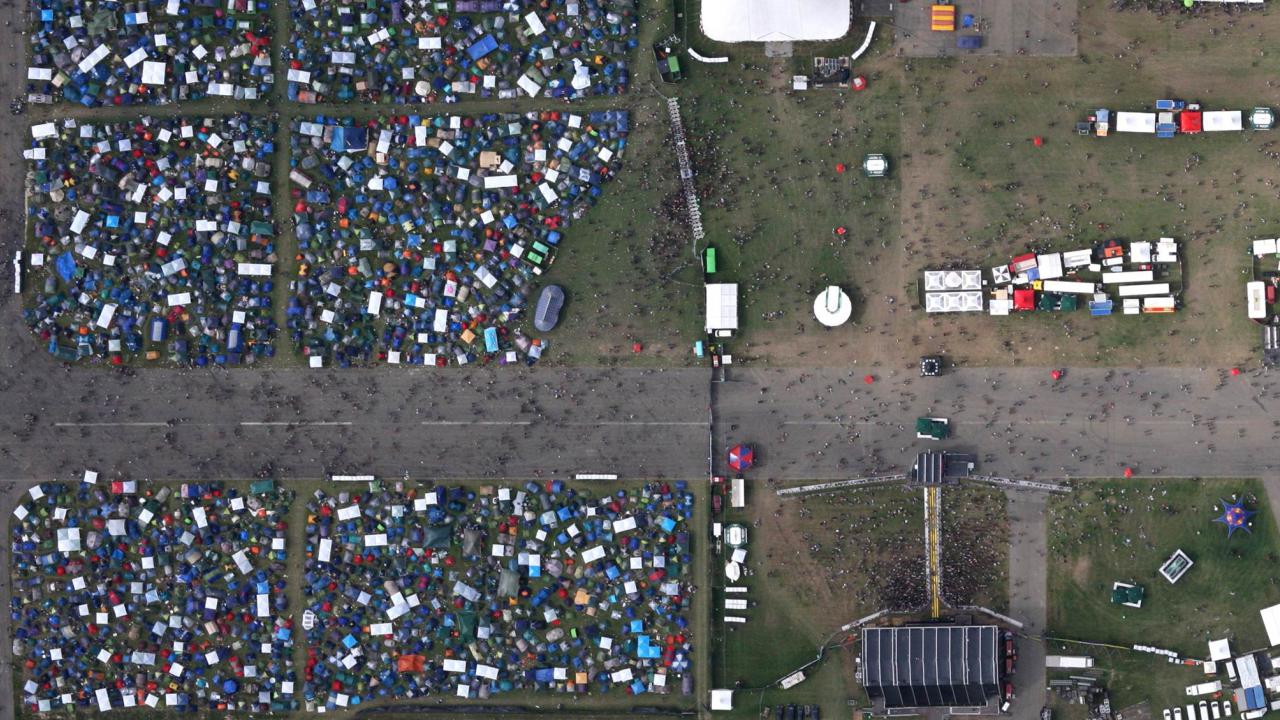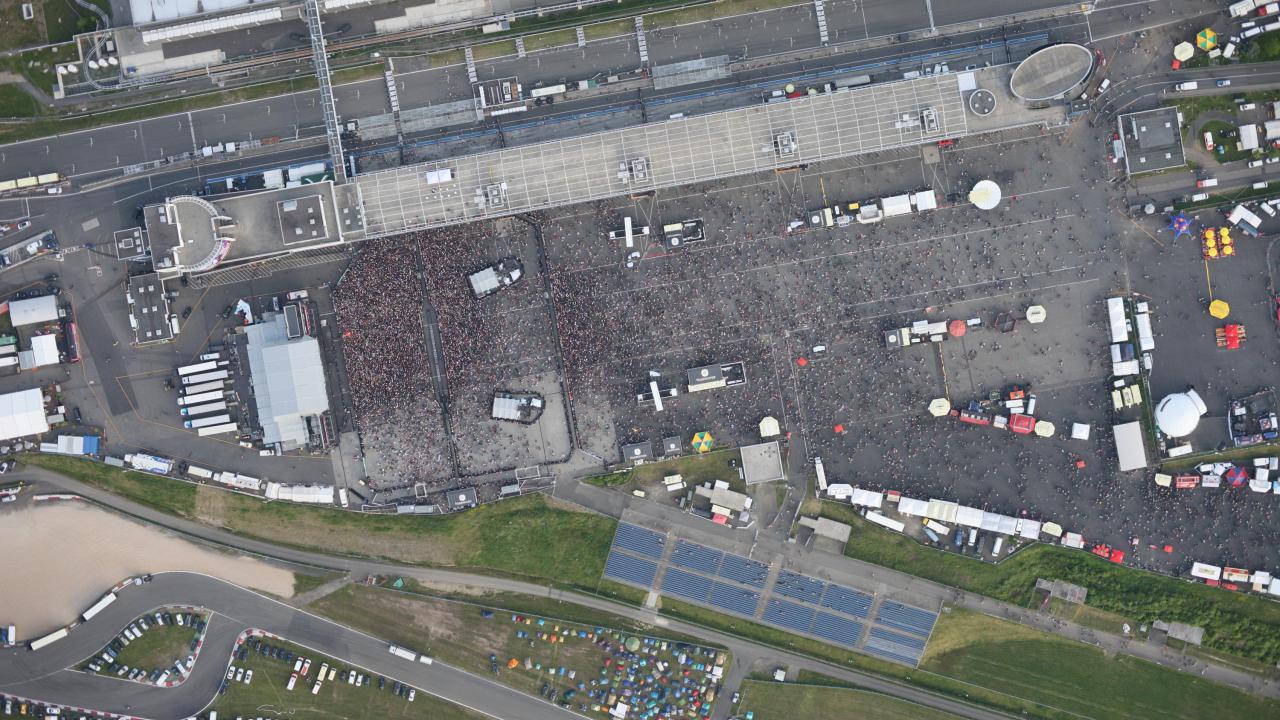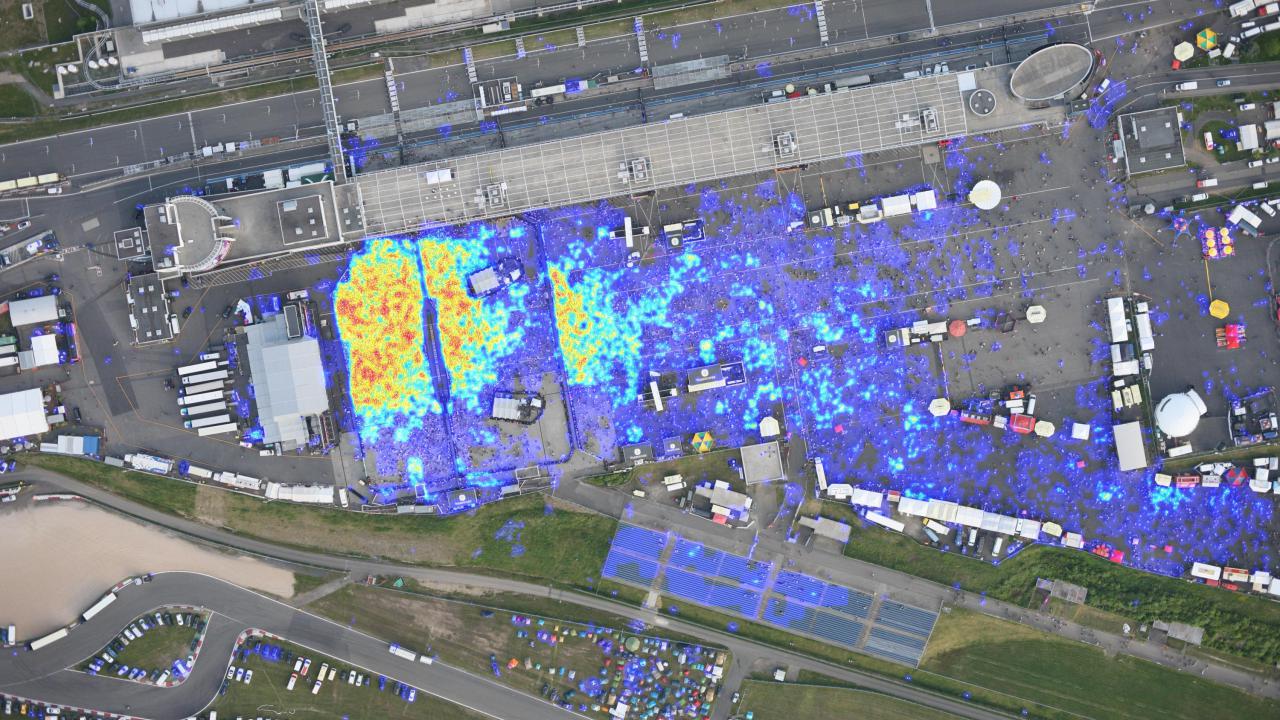Almost everyone knows the unpleasant feeling of standing in a crowd and barely coming back or forth. Crowds that are accepted at entrances and exits to large events, in the stage area of large concerts or at Christmas markets at peak times can also quickly become threatening. But how can critical crowds of people be identified before someone gets hurt? The scientists in the VABENE++ project are working on image processing methods to analyse crowds of people with the help of aerial photographs, so that organizers and security forces will be able to react more quickly in the future.
Critical densities of people arise, especially at narrow places or in queues where more and more people move into. From a person density of 3.5 persons per square metre upwards, it is no longer possible to influence in which direction you are going and with a person density of 6.5 persons per square metre upwards, physical damage in the form of chest bruises (traumatic asphyxia) can occur. In the past, there have been many deaths at major events in this way (2000: Roskilde Festival, Denmark; 2010: Loveparade, Duisburg; 2013: Madhya Pradesh, India). Various countermeasures have now been taken by the organisers. Passenger flows are controlled and constricted areas are avoided as far as possible, but dense crowds are often not completely prevented. For this reason, surveillance cameras are increasingly being installed in order to detect critical situations at an early stage and to be able to intervene quickly. Nevertheless, especially spontaneous accumulations are often not recorded quickly and accurately enough.
Therefore, image processing methods are being researched in order to automate critical person densities and derive them from photos as quickly as possible. In the VABENE++ project, DLR scientists are developing image processing methods to estimate the density of people from aerial photographs taken from aircraft or helicopters - with initial success. For example, dense crowds of people in the stage area of rock concerts could be recognized fully automatically from aerial photos. Special trainable algorithms are used, which are based on a large number of individual images to "learn" to analyze crowds of people and to continuously improve the results. The camera systems from VABENE++ transfer their recordings directly to the ground, which enables the results to be passed on promptly to event organisers and decision-makers. What's more, a simple glance from above preserves the privacy of visitors, since no individual persons are recognized, but people are generally analyzed as texture in the aerial photograph. Currently we are working on the exact calibration of the methods in order to not only detect crowds of people, but also to estimate the density of people. This is a further step towards making the attendance of major events even safer and more carefree in the future.



